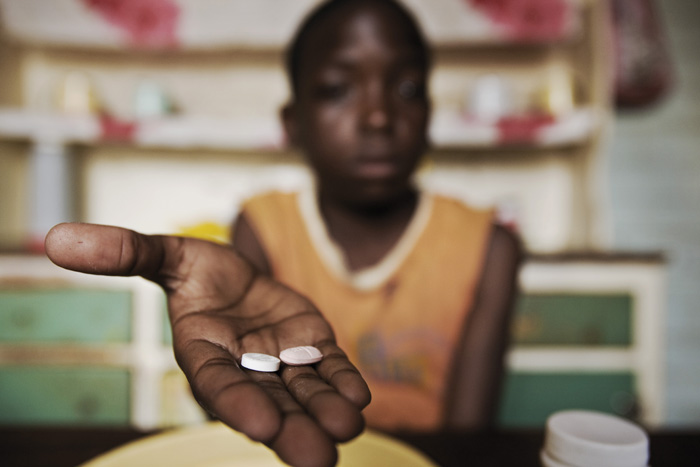Attack on generics - 10 stories that mattered in access to medicines in 2011

Dec 28, 2011
“Now the EU wants to send us back to a time when we helplessly watched friends and families struggle with ill health and death, because some big company and its government decided to put profits before people.”
- Loon GANGTE, Delhi Network of Positive People (DNP+)
Turning the screws on affordable medicines produced in India
India’s role as the ‘pharmacy of the developing world’ is once more under fire this year from both governments and multinational drug companies.
Five years after the drug company Novartis first tried to get a critical part of India’s pro-health patent law thrown out, the company is back for the final round of its legal battle against the Indian government – this time in the Supreme Court.
If Novartis is successful, India will be forced to grant far more patents on medicines than they currently do, blocking the production of more affordable versions of medicines patented elsewhere, and so keeping newer drugs out of reach of those who need them the most.
At the same time, the European Union (EU) continues its push for much tougher intellectual property rules in its negotiations with India over the terms of a bilateral trade deal.
One of the damaging clauses still on the negotiating table allows companies to sue the government if they feel their investment is coming under threat. Such a clause could have a harmful impact as companies could stop governments from taking steps to protect public health. The tobacco company, Philip Morris, for example is making use of this provision in trade deals to sue Uruguay and Australia for introducing plain packaging laws banning all branding on cigarette packets as part of their public health campaigns against smoking.
And the EU is not alone in its pursuit of tougher IP measures. Other wealthy countries too are right now continuing to bully developing countries into accepting harsh provisions in free trade agreements; these include the negotiations between countries in the European Free Trade Area and India, as well as US trade negotiations with several Asia-Pacific countries in the Trans-Pacific Partnership agreement.
- Loon GANGTE, Delhi Network of Positive People (DNP+)
Turning the screws on affordable medicines produced in India
India’s role as the ‘pharmacy of the developing world’ is once more under fire this year from both governments and multinational drug companies.
Five years after the drug company Novartis first tried to get a critical part of India’s pro-health patent law thrown out, the company is back for the final round of its legal battle against the Indian government – this time in the Supreme Court.
If Novartis is successful, India will be forced to grant far more patents on medicines than they currently do, blocking the production of more affordable versions of medicines patented elsewhere, and so keeping newer drugs out of reach of those who need them the most.
At the same time, the European Union (EU) continues its push for much tougher intellectual property rules in its negotiations with India over the terms of a bilateral trade deal.
One of the damaging clauses still on the negotiating table allows companies to sue the government if they feel their investment is coming under threat. Such a clause could have a harmful impact as companies could stop governments from taking steps to protect public health. The tobacco company, Philip Morris, for example is making use of this provision in trade deals to sue Uruguay and Australia for introducing plain packaging laws banning all branding on cigarette packets as part of their public health campaigns against smoking.
And the EU is not alone in its pursuit of tougher IP measures. Other wealthy countries too are right now continuing to bully developing countries into accepting harsh provisions in free trade agreements; these include the negotiations between countries in the European Free Trade Area and India, as well as US trade negotiations with several Asia-Pacific countries in the Trans-Pacific Partnership agreement.





Leave a Comment